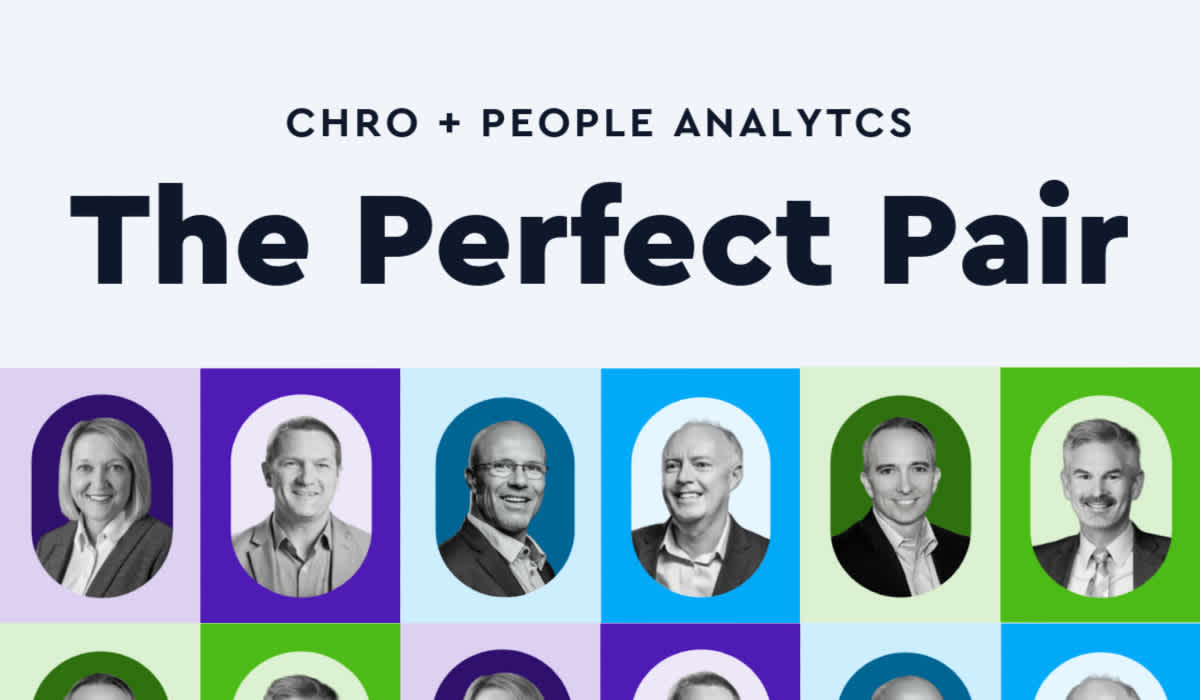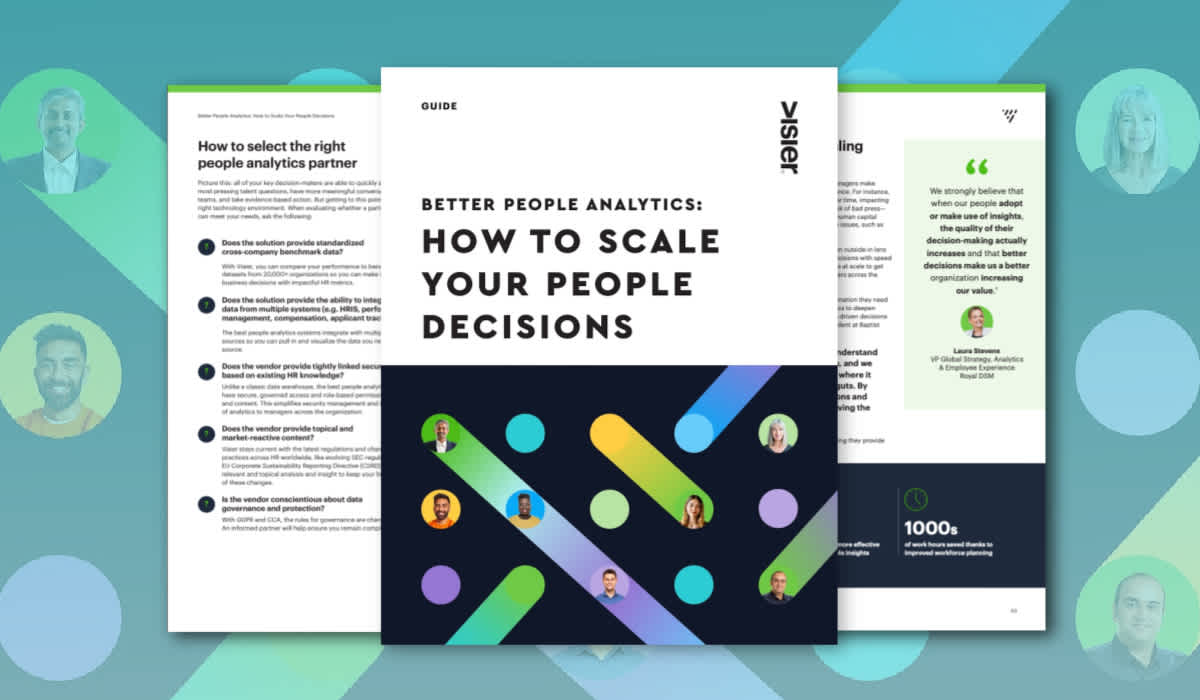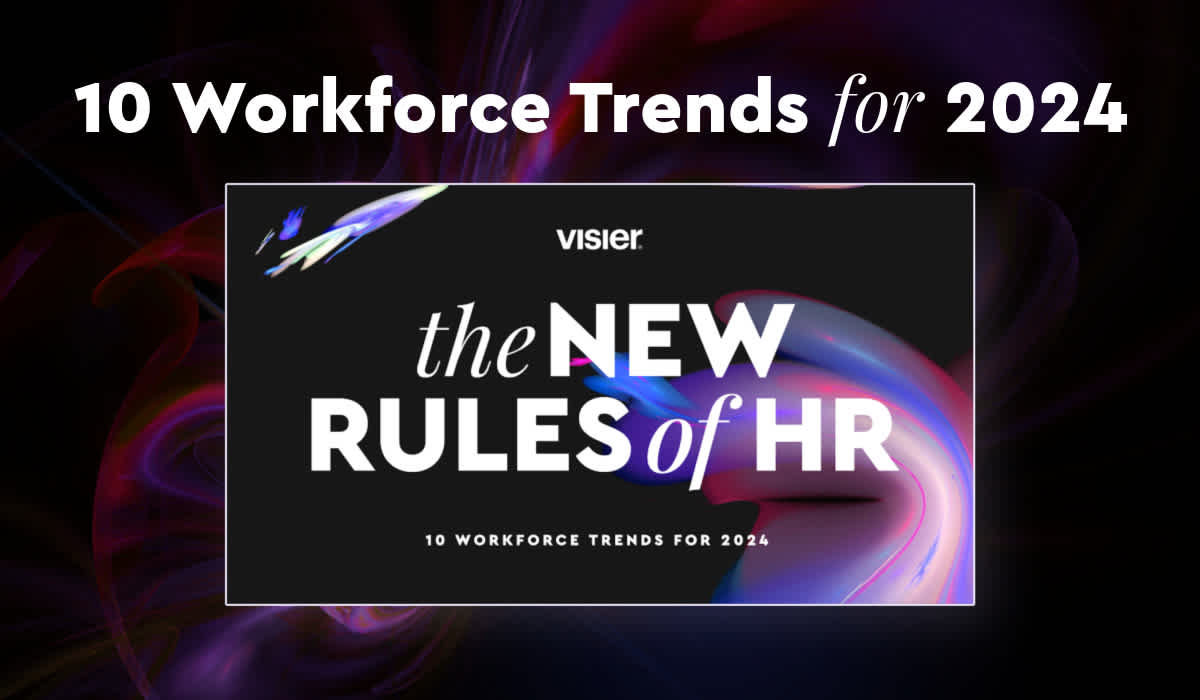4 Top Strategies for Enabling CHROs With Data-Driven Insights From People Analytics Leaders
People analytics leaders from the Visier community share tips for enabling CHROs with data-driven insights. Read four of the top strategies here.

The C-suite, stakeholders, and shareholders all recognize the impact the workforce has on the business, putting more pressure on CHROs to optimize the workforce for maximum impact. CHROs are increasingly responsible for delivering concrete people insights and metrics, especially as new regulations like pay transparency legislation and corporate reporting requirements like the EU Corporate Sustainability Reporting Directive (CSRD) continue to evolve.
People are the source of innovation and competitive advantage, affecting every business outcome. CHROs must understand human performance, engagement, and productivity in combination with business data to identify key factors that drive positive change for the business through people. They need access to the right data and insights to deliver, but siloed HR functions and disparate data sources make it challenging.
People analytics bridges the gap between data and strategic insights. By layering people data with business data, leaders can get a holistic view of their workforce and quickly move from raw data to the right analysis to tangible action that supports a business goal.

Here are four proven strategies people analytics leaders in the Visier community use to enable their CHROs with data-driven insights and increase HR’s value as a true business partner.
4 strategies to increase your CHRO’s interest in people analytics
Involve your CHRO in strategy development
The transition from data analysts to strategic thought partners has been a significant change for people analytics teams. Involving CHROs in the early stages of analytics strategy development not only fosters a sense of ownership but also ensures that these initiatives are championed at the highest level.
This shift is akin to the evolution seen between CFOs and financial planning teams, highlighting the strategic role of evidence-based decision-making in HR strategies. CHROs actively involved in data discussions tend to have a more comprehensive view of the organization, enabling them to anticipate workforce needs better and align HR strategies with business objectives.
2. Deliver targeted insights to spark interest
To capture the CHRO’s interest, it’s essential to provide insights that are directly relevant to current HR challenges. This personalized approach demonstrates the direct value of analytics in areas they care about. Whether it's workforce efficiency, employee engagement, or employee retention, presenting relevant, insightful data can turn analytics into a topic of keen interest for your CHRO.
One successful approach is using business questions from other departments to showcase the value of people analytics. This helps CHROs move beyond intuition, understanding workforce dynamics through a data-informed lens.
3. Engage in side projects to prove value
Engage in people analytics projects that may not be prioritized on the current agenda but possess substantial potential to drive value across departments. These initiatives can be pursued alongside regular tasks, allowing an exploratory approach to uncover untapped analytical opportunities.
The key is to identify areas where analytics can add novel insights and solve existing problems. Here are a few examples:
Use predictive modeling to improve talent development strategies
Examine the influence of workplace diversity on productivity
Investigate the correlation between training programs and employee performance to optimize learning and development (L&D) investments
Analyze how efficiency varies across different geographies
Presenting the outcomes of these exploratory projects showcases the unexplored potential of workforce insights. Once their value is proven, these initiatives often gain the attention and support of the CHRO, leading to their integration into the broader strategic agenda. This process transforms them from side projects into key elements of the organization's analytical approach, aligning HR strategies with wider business goals and establishing the analytics team as a vital player in strategic decision-making and organizational success.
4. Challenge the status quo with reporting
Moving beyond traditional reporting and challenging the existing data narrative can further establish the importance of analytics. This involves questioning the relevance and effectiveness of current reports and proposing new, more insightful ways of presenting data.
For instance, what if you turned off certain routine reports to evaluate their actual impact and necessity? This bold move can lead to a reevaluation of data usage, prompting a more strategic approach to reporting and analytics.
Engage CHROs in people analytics to drive organizational success
Engaging a CHRO in people analytics is not just about presenting data; it's about strategically involving them in the process, showcasing targeted insights, demonstrating the value of innovative projects, and reassessing the necessity of routine reporting. These strategies aim to elevate the role of analytics in HR, ensuring it’s seen not just as a reporting desk, but as a strategic partner in organizational success.

Get the Outsmart newsletter
You can unsubscribe at any time. For more information, check out Visier's Privacy Statement.


